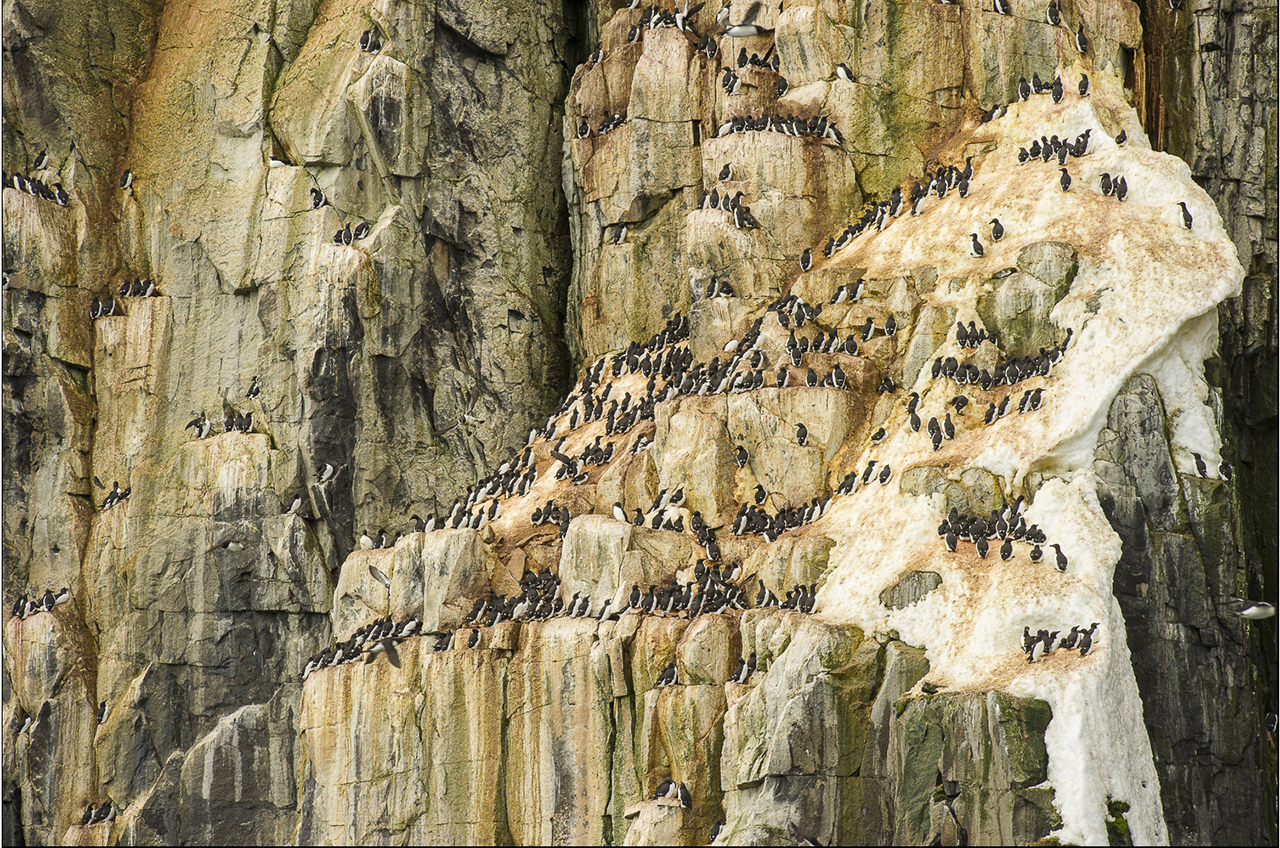The zodiac sways conspicuously while following the unpredictable movement of the waves. It is June, we are in the Svalbard archipelago, in the middle of the Arctic and, together with my fellow companions, we are slowly approaching the steep cliffs of Alkefjellet, which in Norwegian means mountains of the guillemots. The toponym was never more appropriate: on the basaltic cliffs overlooking the sea, still covered with large, thick cloaks of snow, about 60,000 of these sea birds gather each year: Brunnich guillemots Uria lomvia, belonging to the family of alkyds and weighing about one kilogram.
They are there for breeding and the snow has lost its candid color to turn to a more or less intense yellow-ocher due to their droppings. It is an extraordinary natural spectacle: guillemots are colonial birds and pile up on the rocks in search of a suitable space to lay their eggs and raise their young. A question of real acrobatics, but they like it that way. I am attracted by the sight of birds, rocks and suspended masses of snow, in precarious balance. An overall picture that I find fascinating. The problem is being able to frame correctly: the strong and icy wind, the waves, the heavy suit that limits movement, all contribute to making the operation – in itself simple from that position – a real undertaking. The cries that rise from the colony are chaotic, deafening, even if muffled by the gusts of wind, I leave you imagine the smell of guano.
We know that the Arctic is warming at twice the global rate and Brunnich’s guillemots – like many other Arctic species – are birds perfectly adapted to a cold climate, but particularly sensitive to heat.
Studies carried out in the Canadian High Arctic have shown that the high metabolism of these birds exposes them to real overheating even with temperatures of only 20 C. In the area under study, deaths have occurred precisely for this cause. Given the trend we are witnessing, unfortunately, a serious doubt arises about what the future will be for guillemots and other inhabitants of the Arctic, including the one that best represents this ecosystem in our eyes: the polar bear.

